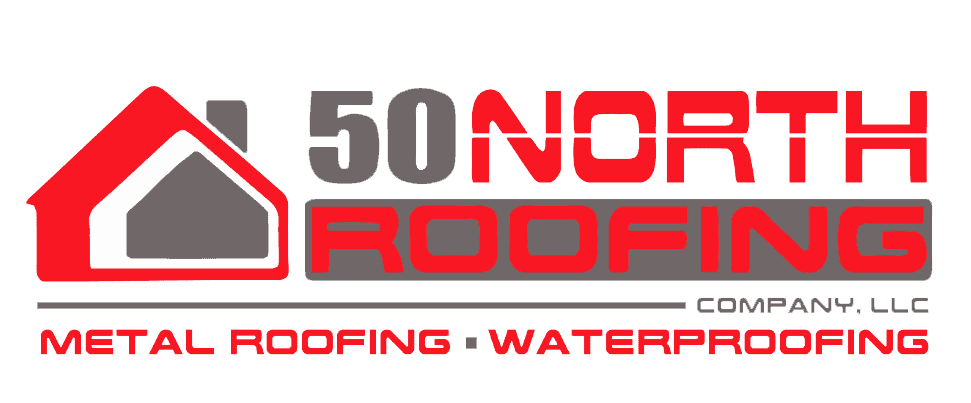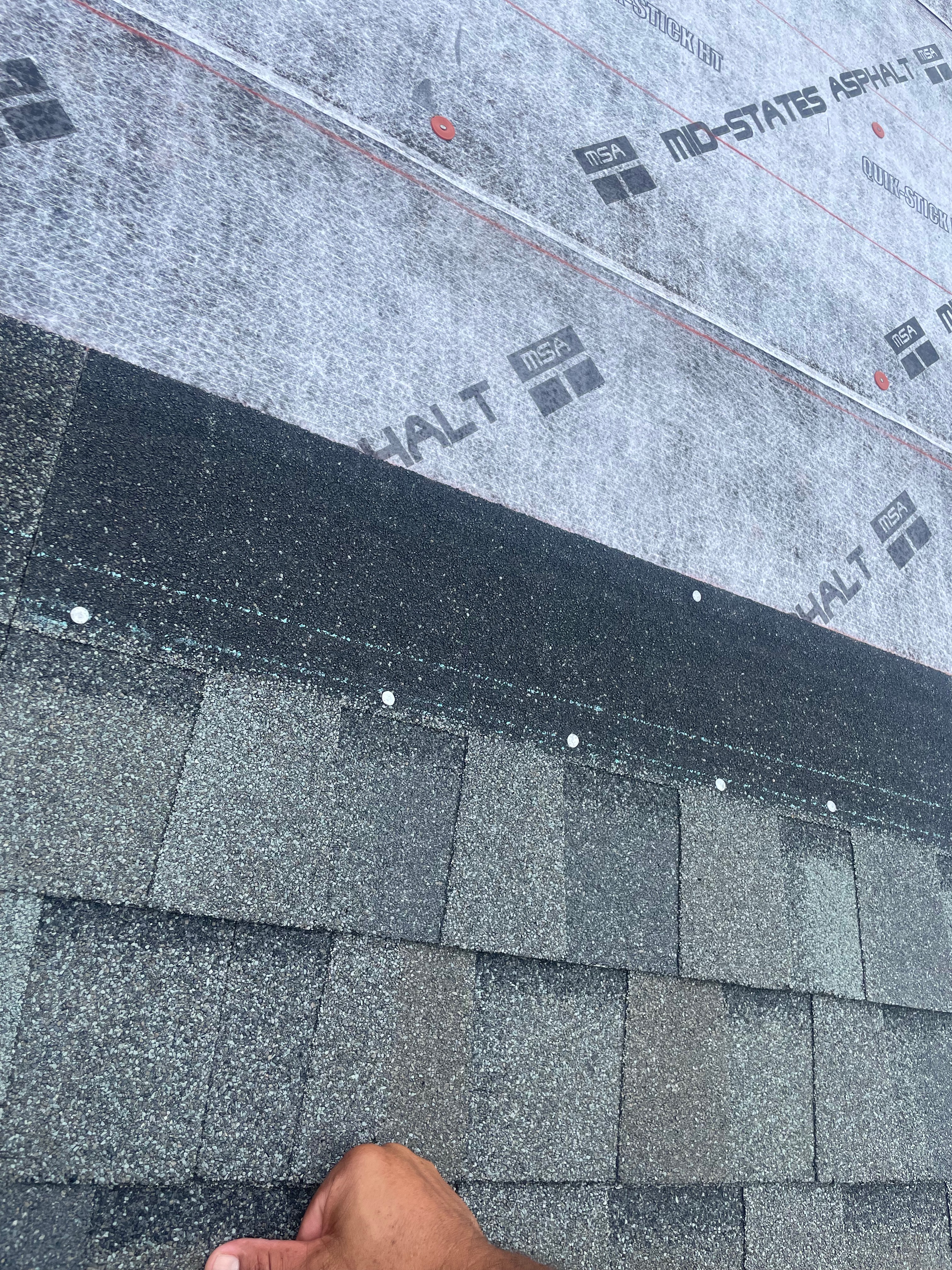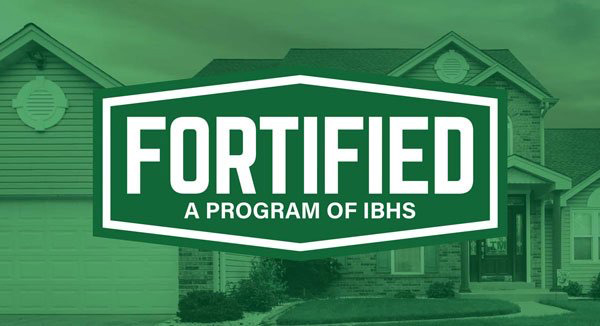Why You Should Never Just Put Shingle Over Existing Shingles: Why Tear-Off Is Necessary
Replacing a roof is a significant investment that requires careful consideration and proper planning. One common question homeowners often face is whether it’s acceptable to add new shingles over existing ones. While it may seem like a cost-saving measure, installing new shingles over an old layer can lead to several problems, from a shortened roof lifespan to serious structural damage.
At 50 North Roofing, we always recommend a full roof tear-off instead of layering shingles over old ones. In this article, we will discuss why tear-off is crucial, the problems caused by layering shingles, and how proper roof replacement ensures the durability and longevity of your roof. We’ll explore the long-term costs associated with layering new shingles over old ones and why the short-term savings are deceptive.
Understanding Roof Replacement: Tear-Off vs. Layering Shingles
When it comes to roof replacement, homeowners have two main options: tear-off or reroofing (layering new shingles over existing ones). The decision between these two approaches has significant consequences for the lifespan, durability, and cost of your roof.
Tear-Off vs. Reroofing
A tear-off involves completely removing the existing shingles and underlayment to expose the roof deck. This allows for a thorough inspection of the roof’s structure and ensures that any underlying damage—such as rot, water damage, or mold—is identified and repaired before new shingles are installed.
Reroofing, on the other hand, involves placing a new layer of shingles directly over the existing ones. While this approach may save money upfront by eliminating the cost of tear-off and disposal, it comes with significant risks. Hidden damage can go unnoticed, the added weight can stress the roof’s structure, and ventilation issues may arise.
At 50 North Roofing, we believe that a full tear-off is the only way to ensure that your new roof will provide the protection your home needs.
The Fundamentals of Roof Replacement
Replacing a roof involves more than just adding new shingles. It requires careful planning, an understanding of roofing materials, and knowledge of the roof’s structure. Before deciding whether to layer new shingles over old ones, it’s essential to understand how roofs are constructed and how materials play a role in the roof’s overall performance.
Roofing Materials and Structures
The most common roofing materials include:
- Asphalt shingles: Affordable and widely used due to their ease of installation and availability.
- Metal roofing: Durable and long-lasting, with resistance to extreme weather.
- Wood shakes: Provide a natural aesthetic but require more maintenance.
- Slate: An expensive option but known for its longevity and classic look.
Regardless of the material, the roof structure plays a critical role in roof performance. The roof deck—typically made of plywood or oriented strand board (OSB)—provides support for the shingles and should be inspected before any new installation. Proper shingle installation on a sturdy roof deck ensures durability and protection from the elements.
The Importance of a Complete Tear-Off
A tear-off allows roofing contractors to inspect the underlying roof structure and make necessary repairs. By removing the old layer of shingles, contractors can detect and address problems like:
- Rotting wood: A common issue, especially if the previous roof was leaking or if moisture had been trapped beneath the shingles.
- Water damage: Prolonged exposure to moisture can weaken the roof deck and lead to more significant structural issues.
- Mold growth: Mold thrives in moist environments, and leaving damaged layers in place can accelerate its growth.
- Ventilation issues: Proper ventilation is crucial for maintaining a healthy roof structure. Layering shingles can impede air circulation, trapping moisture and increasing the risk of future problems.
Performing a tear-off ensures that these issues are addressed before the new roof is installed, providing a solid foundation and preventing the need for costly repairs later.
Risks of Layering New Shingles Over Old
While layering new shingles over old ones may seem like an attractive, cost-saving option, it can lead to significant problems, including weight concerns, hidden damage, and complications with warranties and building codes.
1. Weight Concerns and Structural Integrity
Adding a second layer of shingles increases the overall weight of the roof. This extra weight may exceed the design limits of the roof structure, putting undue stress on the roof decking and trusses. Over time, this stress can cause the roof to sag, potentially compromising the entire structure.
Key risks of added weight:
- Roof sagging: While it may not be immediately noticeable, the added weight from multiple layers of shingles can cause the roof to sag over time, leading to structural damage and creating areas prone to water pooling.
- Increased risk of collapse: In extreme cases, the additional weight could lead to a roof collapse, especially in areas prone to heavy snow or rainfall.
At 50 North Roofing, we ensure that your roof is structurally sound and able to support the weight of the materials we use, which is why we recommend a complete tear-off for any roof replacement project.
2. Hidden Damage and Future Problems
By layering new shingles over old ones, you risk covering up existing damage. Problems such as rot, leaks, or weakened roof decking may go unnoticed, leading to severe issues down the road.
Examples of hidden damage:
- Water damage: If the old shingles are leaking, water can seep into the roof deck, causing wood rot and mold growth. Adding new shingles won’t fix this problem—it will only mask it, allowing the damage to worsen.
- Mold and mildew: Trapped moisture between layers of shingles creates an ideal environment for mold and mildew growth. Mold not only damages the roof structure but also poses health risks to the occupants of the home.
Without tearing off the old shingles, these problems can fester, eventually leading to a need for extensive (and expensive) repairs or even a complete roof replacement.
3. Complications with Warranty and Building Codes
Installing new shingles over existing ones can void manufacturer warranties. Most shingle manufacturers require proper installation to maintain their warranty terms, and layering shingles often does not meet their guidelines.
Issues with warranties and codes:
- Voiding the warranty: If new shingles are installed over old ones and the roof fails, the manufacturer is unlikely to cover the damage, leaving you responsible for the full cost of repairs or replacement.
- Violating building codes: In many areas, local building codes stipulate that only one layer of shingles is permitted. Violating these codes can result in fines or force you to redo the entire roof, adding significant financial and logistical burdens.
Additionally, homes with roofs that don’t comply with local building codes or have voided warranties can be more challenging to sell, as potential buyers may view them as high-risk investments.
Implications for Roof Lifespan and Costs
While adding new shingles over old ones can save you money upfront by avoiding the cost of a tear-off, the long-term expenses can far outweigh these initial savings.
Short-Term Savings vs. Long-Term Expenses
On average, layering new shingles can save homeowners between $1,000 and $2,000 by reducing labor and disposal costs. However, these short-term savings are deceptive, as the long-term costs often outweigh the benefits.
Hidden costs of layering shingles:
- Shortened lifespan: A roof with two layers of shingles will not last as long as a properly installed single-layer roof. The added weight, trapped moisture, and unresolved underlying issues can all contribute to a shorter lifespan for the new shingles.
- Increased repair costs: Covering up existing damage only delays the inevitable need for repairs. When problems do arise, they are often more severe and costly to fix than if they had been addressed during the initial roof replacement.
- Early replacement: Because the new shingles are installed over an existing layer, their durability is compromised, leading to the need for a full roof replacement sooner than anticipated.
While it may seem like you’re saving money by opting for reroofing, you’ll likely spend more in the long run on repairs, early replacement, and potential structural damage.
Best Practices for Roof Replacement
When it comes to replacing a roof, hiring the right contractor and choosing quality materials are essential for ensuring that the job is done correctly and that your new roof will last for years to come.
Choosing the Right Contractor and Materials
The first step in any roof replacement project is choosing a reputable contractor. Look for a contractor who is licensed, insured, and experienced in roof tear-offs and installations. A good contractor will provide references and be familiar with local building codes and manufacturer requirements.
Factors to consider when selecting a contractor:
- Certification and licensing: Ensure that your contractor is certified and licensed to perform roof replacement work in your area.
- Experience and references: Check the contractor’s reviews and ask for references from previous clients.
- Warranty coverage: Choose a contractor who offers a warranty on their work to ensure that any issues are covered after the installation.
Once you’ve selected a contractor, they can help you choose the best materials for your roof replacement. Investing in high-quality materials, such as upgraded shingles, underlayment, flashing, and ventilation components, will improve your roof’s performance and longevity.
At 50 North Roofing, we specialize in using top-tier materials and proven installation methods to ensure that your new roof will last for decades.
Understanding the Roofing Process
The roof replacement process typically involves the following steps:
-
Inspection: A thorough inspection of the existing roof will identify any damage that needs to be addressed before installation.
-
Tear-Off: All old shingles and roofing materials are removed, exposing the roof deck.
-
Repairs: Any damaged sections of the roof deck are repaired or replaced.
-
Installation: The new roofing materials, including underlayment, flashing, and shingles, are installed according to manufacturer guidelines and local building codes.
-
Ventilation and Finishing: Proper ventilation components, such as ridge vents, are installed to ensure adequate airflow, preventing moisture buildup and extending the life of the new roof.
At 50 North Roofing, we follow a step-by-step process to ensure that your roof is installed correctly and meets all local codes and manufacturer requirements.
Conclusion: Why Tear-Off is the Right Choice
While it may be tempting to save money by layering new shingles over old ones, the risks and long-term costs make this approach less desirable. A complete tear-off allows for a thorough inspection of the roof deck, ensures proper installation of new materials, and prevents hidden damage from going undetected. In the end, the longevity, durability, and safety provided by a tear-off far outweigh the short-term savings of reroofing.
At 50 North Roofing, we believe in doing things the right way. That’s why we always recommend a full tear-off when replacing your roof. Investing in a complete tear-off and high-quality materials will not only extend the life of your roof but also protect the structural integrity of your home. When it comes to roof replacement, opting for a full tear-off is the best way to safeguard your investment and ensure peace of mind for years to come.
For professional roof replacement and tear-off services, contact 50 North Roofing today. Our experienced team is ready to help you choose the best solution for your home, ensuring a long-lasting, durable roof that will protect your property for decades.




